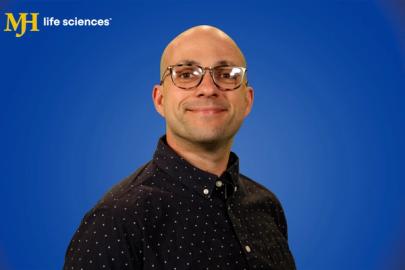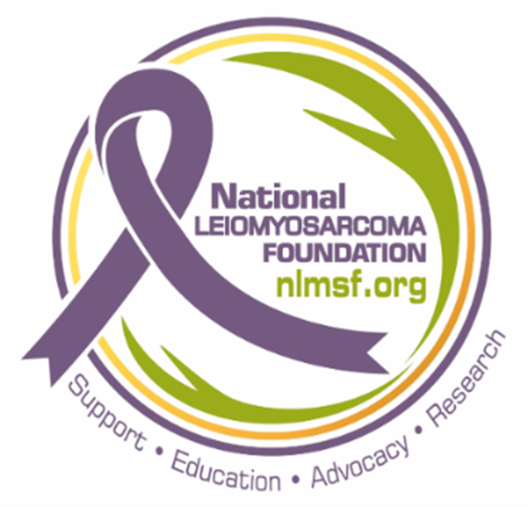- About Us
- Advertise / Support
- Editorial Board
- Contact Us
- CancerNetwork.com
- TargetedOnc.com
- OncLive.com
- OncNursingNews.com
- Terms & Conditions
- Privacy
- Do Not Sell My Information
- Washington My Health My Data
© 2025 MJH Life Sciences™ and CURE - Oncology & Cancer News for Patients & Caregivers. All rights reserved.
Caregivers Are The ‘Mouthpiece’ For Patients in Clinical Trials

A nationally-published, award-winning journalist, Alex Biese joined the CURE team as an assistant managing editor in April 2023. Prior to that, Alex's work was published in outlets including the Chicago Sun-Times, MTV.com, USA TODAY and the Press of Atlantic City. Alex is a member of NLGJA: The Association of LGBTQ+ Journalists, and also performs at the Jersey Shore with the acoustic jam band Somewhat Relative.
One expert explains how caregivers are a vital part of the care team during a clinical trial.
When a patient with cancer is participating in a clinical trial, their loved one serving as their caregiver is a vital member of the care team — even if they don’t think of themselves as one initially.
“I think many caregivers are of the impression that maybe they aren't part of the care team — and even the patient may think they're not part of the decision-making process in the care team, the multidisciplinary care team,” noted Annie Achee, president and community education/research liaison of the National Leiomyosarcoma Foundation.
But, Achee knows the importance of caregivers firsthand. Her husband, Dr. Mitch D. Achee, received a diagnosis of leiomyosarcoma in 2011. Leiomyosarcoma, or LMS, is described by the National Cancer Institute as “a type of rare cancer that grows in the smooth muscles. The smooth muscles are in the hollow organs of the body, including the intestines, stomach, bladder, and blood vessels,” and it affects approximately six out of every million people in the United States each year.
“Neither one of us knew how to spell it or pronounce it [when he received his diagnosis], although he is a physician,” said Annie Achee. “And so, we were just very anxious to learn as much about the disease as quickly as possible so that we could be effective in our efforts to be part of the care team process.”
Achee shared some advice regarding the role of the caregiver during a clinical trial.
Be in the Conversation
“For the caregiver, they have to really sit down with the patient and listen to all the clinical trial investigators' information — which will be a lot — and they'll go over the informed consent, which is pages, pages and pages, but it's OK to go through it more than once.
“Because, as a patient and as a caregiver, you want to know what the rights are of the patient,” Achee said. “Can they get out of the clinical trial if they want to? And they certainly can, it's not a legally binding document. So, they want to know what the rights are, what the clinical trial entails, what the side effects might be, what the financial toxicity might be in participating, travel that’s involved. And they want to make sure that they are supporting their loved ones, as best they can by being prepared. And to be prepared, you have to be well informed on the clinical trial.”
Communication is Key
As part of the patient advocacy process, caregivers “will be the ones that will also be involved in asking the questions of the investigator, the nurse navigator that's involved in the trial and any administrator that's helping to support the patient in the clinical trial journey. And they will also want to inform the clinical trial individuals of side effects if the patient can't do that themselves.”
Caregivers are also involved in discussing comorbidities, such as heart issues, diabetes or a thyroid condition, that might affect the drug being evaluated in the clinical trial.
Caregivers, Achee noted, “will want to be the mouthpiece for the patient. And they'll want to take copious notes so that when they come back home, they can talk about it with other family members as well, children that are involved.
“And, this is another aspect of the caregiver, they'll want to really try to help children understand what their parent is going through. And that's very important to keep the family together and minimize stress and anxiety as much as possible.”
Make a Survivorship Care Plan
Caregivers are also involved in the creation of a survivorship care plan, more details on which can be found on the foundation’s website at nlmsf.org/after-treatment.
“It's important to have that in place because that builds quality of life after it's all over with, [and] even during the process [when] you need a break from it, you need a little bit of respite for the caregiver as well as [for] the patient because you have to not be immersed in concern and anxiety and stress about a reoccurrence, which is ever-present, and it's understandable,” Achee said.
“But, [it’s important] to pivot to a focus of, ‘How am I going to get through this? How can I get through this? I need to eat well, I need to eat properly, I need to get proper rest.’ And all of this funnels into a better focus for the appointment. It's so important to ask the right questions of the right team at the right time.”
Know Your Limits
“The caregiver needs to understand that they don't have to do it all,” Achee said. “There'll be other family [members] that will say, ‘Hey, may I step in? May I help you with a meal or with transportation?’ And, those kinds of gracious offerings should be accepted.
“[Caregivers] shouldn't have to feel like they have to do it alone, because they don't need to. There may be situations where they are alone and reaching out to friends, reaching out to caregiving support, resources, and certainly reaching out to us because we're very passionate about this.”
Resources Are Out There
Resources are available for caregivers through the foundation, including a “Caregiving Counts” webinar and hotline access to a patient caregiver liaison, as well as links to additional information in the Caregivers’ Corner section of the foundation’s website.
“There are so many aspects of this, so much, and to be thrown into this, you know, it's OJT, it's on-the-job training,” said Achee. “But there's so many resources that are available out there. … It's a lot of coming together because it does take a village to get through this.”
For more news on cancer updates, research and education, don’t forget to subscribe to CURE®’s newsletters here.
Related Content:




